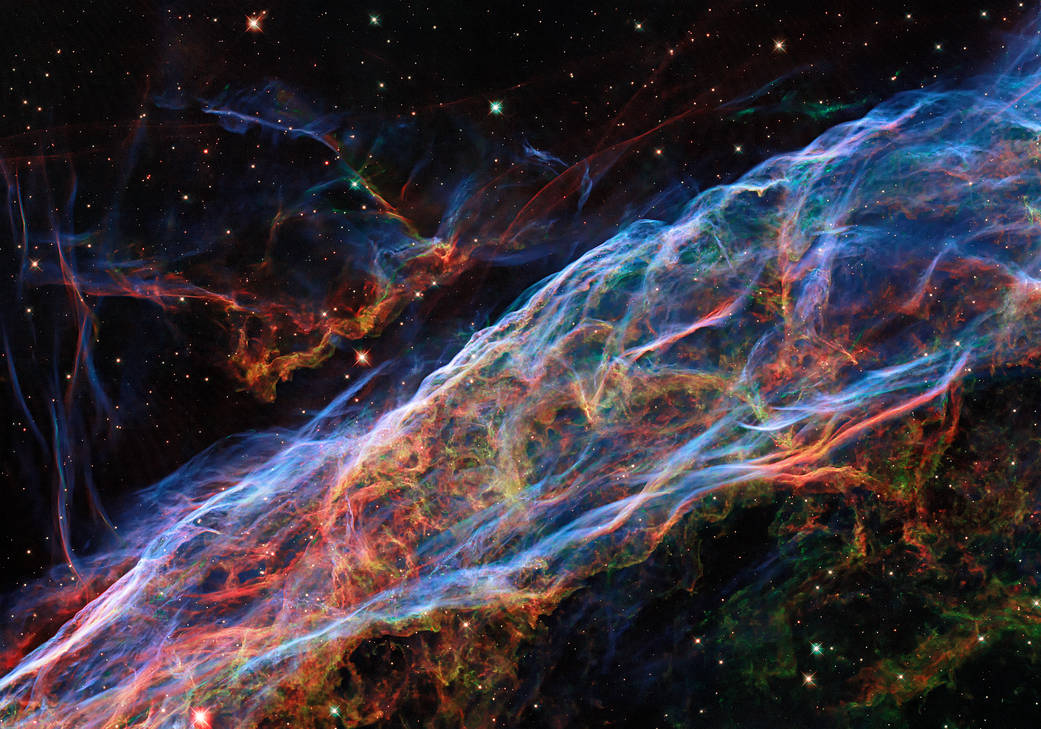2021年04月05日
Veil Nebula: Wisps of an Exploded Star
Image Credit: ESA/Hubble & NASA, Z. Levay
Explanation: Wisps like this are all that remain visible of a Milky Way star. About 7,000 years ago that star exploded in a supernova leaving the Veil Nebula. At the time, the expanding cloud was likely as bright as a crescent Moon, remaining visible for weeks to people living at the dawn of recorded history. Today, the resulting supernova remnant, also known as the Cygnus Loop, has faded and is now visible only through a small telescope directed toward the constellation of the Swan (Cygnus). The remaining Veil Nebula is physically huge, however, and even though it lies about 1,400 light-years distant, it covers over five times the size of the full Moon. The featured picture is a Hubble Space Telescope mosaic of six images together covering a span of only about two light years, a small part of the expansive supernova remnant. In images of the complete Veil Nebula, even studious readers might not be able to identify the featured filaments.
Tomorrow’s picture: sisters of mars
面纱星云:爆炸恒星留下的云气丝
影像提供: ESA/Hubble & NASA, Z. Levay
说明: 像这类的云气丝,是一颗恒河恒星仅存的可见遗迹。大约在7,000年前,那颗恒星发生超新星爆炸而留下了面纱星云。在当时,这团扩张云气亮如眉月,住在信史黎明阶段的人们,连续数周肉眼可见。到如今,这个又称为天鹅座环的超新星遗迹已逐暗去,只有用小望远镜指向北天的天鹅座方向时才可见。面纱星云幅员非常广袤,纵然位在1,400光年远处,仍然涵盖了超过5个满月的宽度。上面这幅主题影像,组合自6张涵盖2光年范围的哈勃太空望远镜照片,以呈现宽广超新星遗迹的部分区域。不过在完整的面纱星云影像里,就连很认真的读者,可能也无法辨认出上图所呈现的云气丝。
明日的图片: sisters of mars







